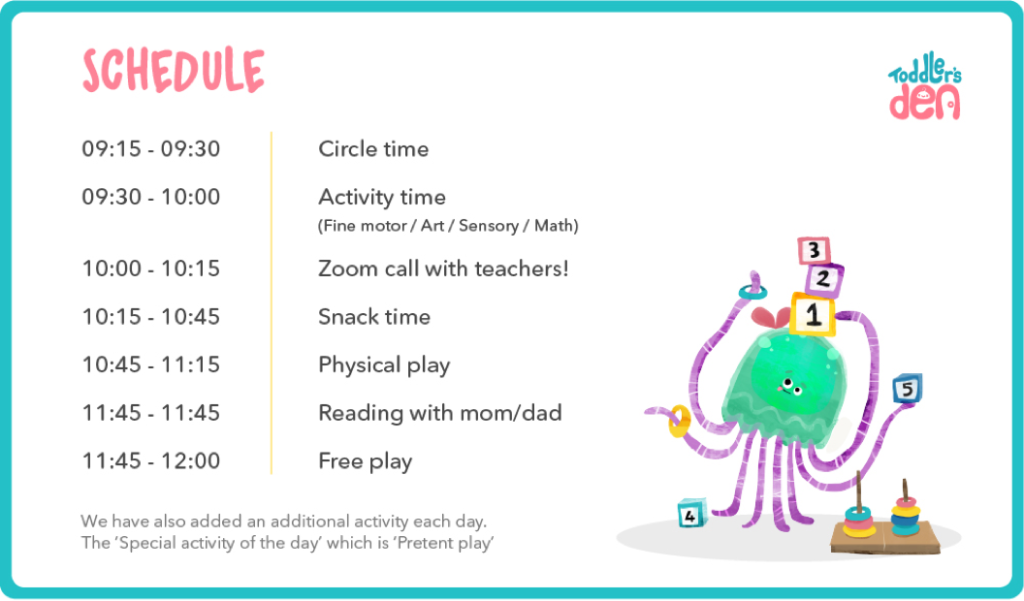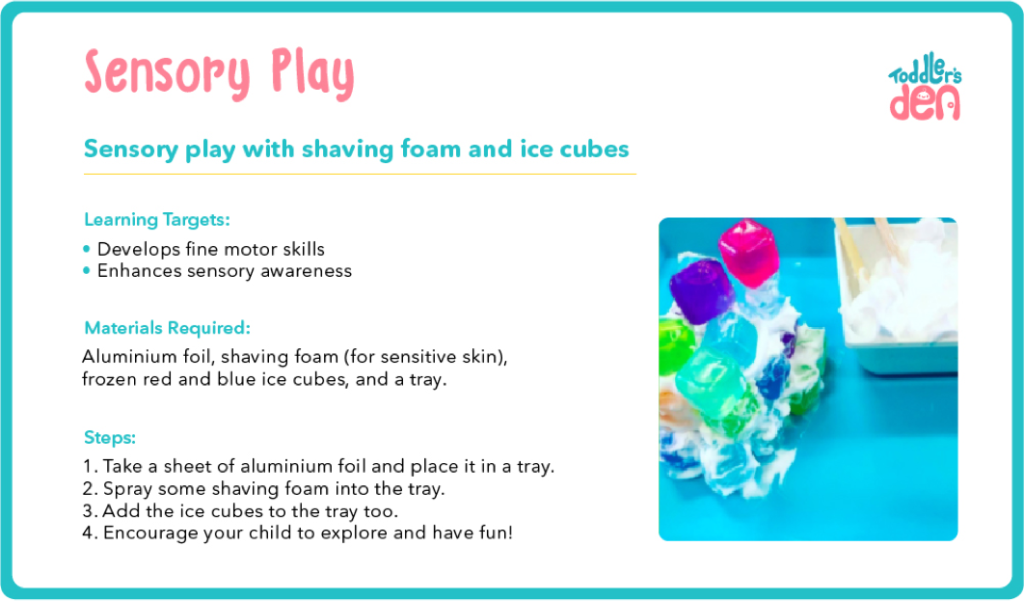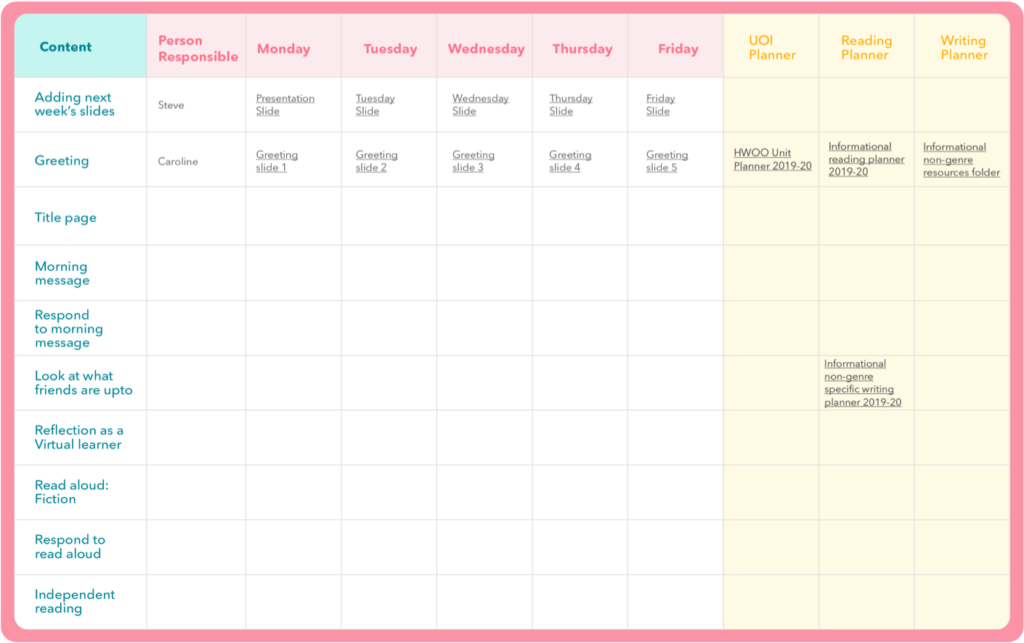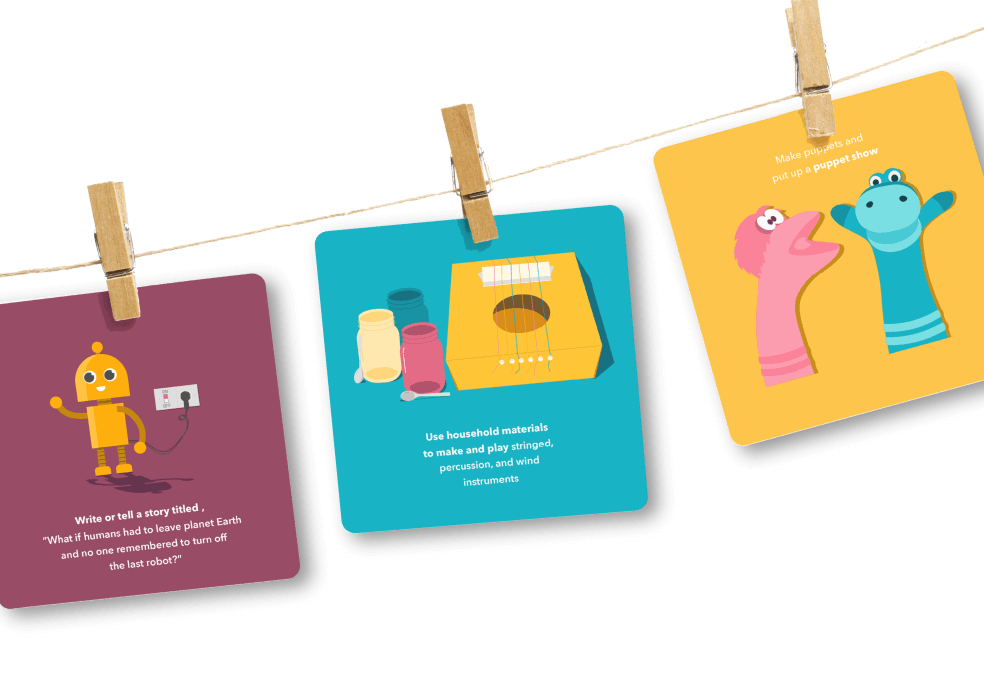Remote Learning in the Early Years – Toddle Talks Webinar
The Early Years, more than any other age group, has always been known to be ‘hands on’, ‘interactive’ and ‘skill based’. The curriculum is based on a balance of academic, socio-emotional and physical learning that we have always known to experience through real time, face to face interactions between teachers and students. However, in the wake of COVID-19, we’re in a situation that requires us to embrace technology, adapt our lessons, and connect with our students and parents virtually. Who would have believed it was even possible to teach young children remotely? But we did it. We all are in it now, together.
Through the PYP transdisciplinary themes, we will walk you through ways in which virtual learning can be made possible in the Early Years.
Where we are in place and time
An inquiry into orientations in place and time, relationships between and the interconnectedness of individuals from local and global perspectives
As educators, our current context is one of remote and asynchronous learning, limited availability of resources and student and parent engagement from a distance.
For remote learning in the Early Years to be successful, it is important for us to maintain a close relationship with our students. Our young learners are home with their parents, siblings and extended family, unsure of why they’re not going to school, or going to play at the park anymore. As educators, we should help them feel safe, secure, loved and cared for during this time.
It is also important for us to support and coach parents to be able to engage learners in inquiry, daily home routines and quality family time. Parents are coping with work and home dynamics in a sensitive and unpredictable environment and as teachers, we need to support them in supporting their children better.
How we organise ourselves
An inquiry into the interconnectedness of human-made systems and communities; the structure and function of organizations; societal decision-making…
We are all interconnected – our systems and communities. In a remote teaching and learning environment, it is crucial to develop structures, processes and systems that work in your context to support students, teachers and parents.
Supporting students
We can support students through targeted strategies and structures such as those below.
Give them a sense of connection with their teachers – The social emotional environment at home and school has an impact on children’s behaviours. We often hear parents saying that children are feeling anxious, are unable to engage in activities, are throwing tantrums or feeling less engaged. Beyond academics and daily routines, helping students manage their feelings is the most important aspect of the current crisis. As their teacher, establish a virtual connection while encouraging mindfulness through child friendly breathing techniques, yoga and calming strategies such as positive self talk is an important element of the curriculum.
Give them a sense of routine in their daily lives – Establish home routines to help students feel safe and calm through this phase. At Toddler’s Den we send across a sample schedule to our class parents on Toddle. Parents can follow the plans as is or modify it to suit their home requirements.

Empower them to participate in weekly learning engagements – Parents are also going through many changes in their lives, and this might affect children at home as well. To cope with the home environment encourage children to be involved in daily home chores such as serving drinking water, laying the dinner table and so on. Having a positive impact on each other is important in the parent – child relationship too!
Enable communication channels between them and us – Communicating with our young learners consistently is very important for them to feel a sense of security and reliability. Meet your young learners regularly through video calls to build synchronous learning and communication with them. In the asynchronous set up, you could create video or audio recordings of messages from yourself to students and vice versa to help maintain a close, dependable relationship. Creating interactive videos that provoke students to engage with their physical surroundings will provide a deeper understanding of the Unit of Inquiry. Here’s a playlist with a series of videos under the theme How we organize ourselves.

Supporting teachers
As teachers, we’re all trying to cope with this new way of working and learning new ways to cope with virtual teaching and learning.
On a personal level, think about how you might work best in this ‘work-from-home- scenario’ and share it with your team. Consider a home routine to make sure you can function effectively and be available to your team members at certain times in the day.
As teaching teams, find a time to meet with your team virtually to discuss how they’re feeling, how they’re coping with their personal lives or to play a virtual game together! List down a few questions or wonderings that you have about the current phase. Jot down ways in which you think you can be successful through this as a team. Create essential agreements that will help you maintain trust between team members and help you ensure smooth communication channels.
As coordinators or supervisors, establish routines and agreements with your teaching teams to maintain a healthy working environment for all. Create detailed personal discipline and communication guidelines as a team is one way that helps teachers continue to have trusting relationships. Create weekly schedules for planning, task division, video meetings can help you to make sure that work is completed on time.
As teachers, assessments and reporting are key areas that may need rethinking in remote learning. Be authentic in your assessments, based on the current situation. Gather evidence in the form of photos, videos and anecdotes from parents. Creating a parent assessment rubric. Virtual parent teacher conferences can be a great way to connect with families.
For reporting too, there is no better way than to be authentic. Report how your children are feeling, how engaged they might be, how independent they are, or what they might be struggling with through this phase. Video calls and student work samples can give you an insight into their understanding of concepts. But, don’t forget to cater your reporting to the current context and acknowledge that some children might not be able to do their best due to many other environmental factors.

Supporting parents
They say parents are a child’s first teachers! Given the right support, they would be able to set up a learning environment and support their children. Consider what they might be feeling, what their home situations might look like through this difficult and uncertain phase. Talk to your team about how to support parents in establishing daily routines, providing them with easily available/ adaptable resources, providing them with schedules and structures that can be easily implemented at home to ensure a smooth transition into home learning.
Some ways to support parents are providing material lists for hands on activities in advance, providing implementation guidelines and learning goals. Communicating with parents regularly and receiving their feedback is really important to help teachers modify lesson plans accordingly. How we express ourselves.
How We Express Ourselves
Inquiry into the ways in which we discover and express ideas, feelings, nature, the ways in which we reflect on, extend and enjoy our creativity; our appreciation of the aesthetic.
Sitting in an early years classroom, you can’t help but notice the many different ways in which children can express their thoughts, feelings and ideas. In many ways, providing children with various mediums and instruments for self- expression has become a trademark of a thriving early childhood centre. Knowing and understanding this, how can we imbue our virtual learning spaces with the same resources and promote personalized creative freedom?
Evaluating Digital Tools
It’s easy to become overwhelmed with the number of digital tools and applications that sell themselves as educational. Just open up the app store on your mobile device and browse the educational category – it won’t take long for you to find dozens of tools that have descriptions filled with buzzwords and digital fads. Instead of downloading anything, just put your device down and take a step back. Let’s keep things simple, shall we?
You can categorize these applications into two buckets: apps for learning and apps to show learning.
Apps for learning usually have a more narrow scope; they align with a specific learning outcome, concept, or line of inquiry. An example of this would be Toca Nature – a fantastic game-based app that will develop children’s understanding of biodiversity, geography, and species interdependence.
Apps to show learning will be broader in scope – they allow students to digitally express and demonstrate their understanding of a concept or topic. Spark Video, for example, enables children to add images, videos, music, text, and voice narration to tell a story, explain a topic, or entertain an audience.
By understanding the differences between these two buckets, and being able to leverage digital applications successfully in your virtual classroom, you are creating an online space that is inclusive and welcoming.
Communication is key… obviously!
You’ve heard it before, but we will repeat it: communication is paramount to the success of your virtual learning. You need to be a beacon of both strength and vulnerability when engaging with families and students. By scheduling virtual check-ins with your children, you are providing reassurance and continuity, reminding them of the fact that even though they can’t physically be at school, that you’re still there, and that you care! We know that students can jump onto one of the many digital libraries, such as RazKids, and listen to a book. However, consider creating your own read-aloud using a tool such as Loom, so your children can see your face, hear your voice, and strengthen their relationship with you, their classroom teacher!
Communicate with families regularly, outline clear expectations and provide suggestions regarding routines that they can implement at home. A great deal of responsibility has shifted from you, the teacher, to the parents – teaching will be, for many, way out of their comfort zone. Allow yourself to be used as a sounding board when they reach out to you for support. Remember that anxiety and stress will be affecting everyone, including parents. Be patient with them!
Finally, remember to create space for your children to engage with one another virtually. Hosting video conferences in Google Meet or Zoom and giving them a chance to reconnect, share stories, and chat goes a long way in giving them a sense of normalcy.
Sharing the planet
An inquiry into the rights and responsibilities in the struggle to share finite resources with other people and with other living things; communities and the relationships within and between them; access to equal opportunities..
Keeping the current context in mind, remember to talk to your students about their responsibility towards our community and our planet. Some ways to do this include reinforcing cleanliness and hygiene through a ‘hand washing song’, encouraging them to support their family in daily chores like washing fruits and vegetables, reminding them to take care of their health and to stay safe.
The only way we can sail through these unprecedented times is by staying connected as a community. Be it through Toddle, Twitter or even chatting on Slack, teachers can share resources and learn from each other. By being lifelong learners and sharing our learning, we can create an engaging and joyful remote learning environment for our early years learners.
Watch Pooja and Ashrita share these ideas here.













